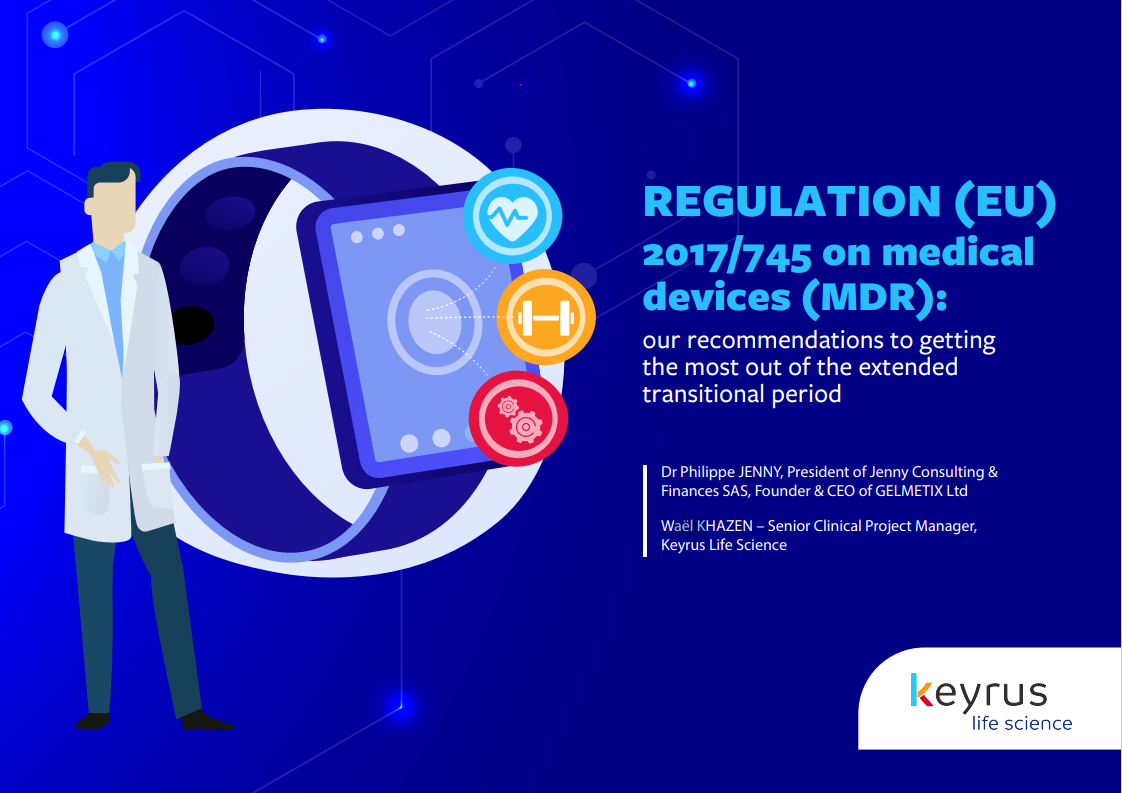You will be redirected to:
The European Medical Device Regulation (MDR), which came into force on May 26, 2021, tightens the requirements for obtaining CE marking, for both products already marketed in the European Union and for new and future products. The substantial changes it introduces, to increase the safety, performance, traceability and transparency of medical devices, on a European scale, means considerable challenges and expenses for the industry. Medical device companies must take advantage of the recently announced extension of the transitional period to strengthen their regulatory skills, better anticipate the requirements of notified bodies (NBs) issuing the CE marking, and strengthen their ability to bring new innovative products to market for the benefit of patients and caregivers.
Any new regulation is initially perceived as a constraint by the players concerned. The new regulation on medical devices is no exception to the rule. While no one questions its relevance and purpose -- a better protection of public health and the safety of patients and users -- its application doesn’t come without difficulties for manufacturers, who must comply with it within the imposed deadlines, as well as by satisfying a whole series of new equirements, which makes the CE marking process much more complex and expensive.
An untenable initial calendar
Passed on May 25, 2017, the MDR was supposed to came into force on May 26, 2022. Due to the covid crisis, an extra year has been given to the industry players, in order to help them comply with the new MDR requirements which are much more stringent than those of the 93/42/CEE and 90/385/CE directives, which previously applied to medical devices.
A complex transition for the manufacturers
The purpose of the legislator is to reinforce the safety and transparency of the medical device industry, by:
Revising the classification: leading to the reclassification of a certain number of products in a higher risk class. The higher the risk class, the more rigorous, detailed, and well-documented the demonstration of the compliance with the MDR’s general safety and performance requirements, must be.
Reinforcing clinical evaluations. In fact, with the exception of class 1 devices, the production of a clinical file clearly evaluating the benefit/risk ratio of the product is becoming almost unavoidable in order to obtain CE marking. While this requirement can be anticipated for products under development, it can be a challenge for existing products whose commercialization was not previously conditioned on the formal provision of clinical evidence. This is the case for all devices that have benefited from the self-certification possibilities provided in the previous texts and for devices that change risk class. To maintain the CE marking of these products, manufacturers must (re)compile a convincing clinical file based on literature and data available (internal and external) on the performance and safety of the product itself and similar products. If these data are insufficient (eg. for implantable and class III DMs), they must undertake specific clinical studies.
This obligation also applies to products that have been certified on the basis of equivalence studies with a previously approved device. It should be noted that the MDR considerably reduces the number of cases where clinical investigations can be avoided by a demonstration of equivalence. It now requires a manufacturer wishing to use it for an implantable or class III DM to sign a contract with the manufacturer of the reference device to give them full and permanent access to its technical documentation -- a highly unlikely practice between competing companies. In addition, the manufacturer must (i) ensure that the original clinical evaluation was performed in accordance with the requirements of the regulation and provide proof of this to the notified body and (ii) demonstrate the equivalence of the technical and biological characteristics of the two products.
Enhanced post-market surveillance. The manufacturer is required to implement a post-market surveillance system to proactively collect, record and analyze data on the quality, performance, and safety of the device throughout its life cycle. In the context of material vigilance, it must also collect serious incidents reported by users and communicate the corrective actions taken to prevent their recurrence. The description of the means implemented to meet these obligations must be included in the file submitted to the NB in order to obtain the CE marking. Once CE marking has been obtained, the manufacturer is also required to produce Periodic Safety Update Reports (PSURs) for Class IIa and above devices and to register them in EUDAMED, the new public database that centralizes all identification, authorization, and tracking information for medical devices in the EU.
What does this mean then for medical device manufacturers?
To read the full expert opinion including our recommendation for a successful exit, download the full expert opinion.
